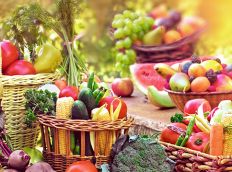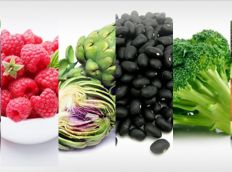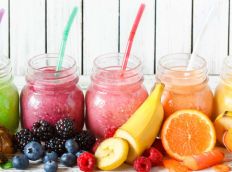When you are trying to live healthier, you know you need to consider a lot of things. For example, you need to cut back on your sugar intake, start eating more vegetables and fruits, exercise 4-5 times a week and sleep sufficiently. However, there is one more important factor that can improve your healthy lifestyle –‘smart food shopping’.
While buying your grocery, you need to be particular about what packaged foods you choose. What may seem healthy to you, on closer inspection, may not turn out as advertised. Hence, you need to check the contents and the ‘nutrition facts’ provided on the food labels on the packaging.
Here’s how you can read and interpret the food labels:
- Serving size – Start with the serving information at the top of the label. This will tell you the single serving size and the total number of servings per container or package. Be careful, as the company’s serving size may differ from the quantity you usually eat.
- Nutrition information panel – This panel provides information on the amount of calories, protein, cholesterol, sodium(the amount of salt), total and saturated fat, carbohydrates (total and sugar) the food contains in 100 gm or a particular serving size. If you are consuming the exact serving of the product, then you are consuming the exact nutrition as mentioned on the label. However, if you consume 2 or 3 servings of the product, then you need to multiply the given information accordingly.
- Ingredients – All the ingredients used in making the product are listed on the label in order of their weight. For example, for a blueberry yogurt, it will you tell what percentage of the yogurt package is made up of blueberries and what is the amount of sugar used. It’s best to avoid a product where sugar is one of the first few ingredients on the list. Also, trans fat (hydrogenated oils and MSG) are two ingredients that should be avoided at all costs.
- Calories – Do not be afraid of calories – calories are the amount of energy you get from a serving of food. Your caloric need depends on your daily activity, age, gender, height and weight. However, it’s important to understand where these calories are coming from. For example, calories from carbohydrates/sugar are harmful than those coming from fats. Also, if you are planning to lose weight, you need to decrease your daily calorie intake.
- % Daily Value – The % Daily Value (DV) tells you the percentage of each nutrient in a single serving, in terms of the daily recommended amount. Usually, the % DV is based on a 2000 calorie diet. Choose foods with a lower % DV (5% or less) of saturated fats, sodium, cholesterol and higher % DV (20% or more) of dietary fiber, iron, calcium and vitamins.
Other important things to note on the food labels are:
- Food additives: Information about food additives, including colours, flavours and preservatives are also provided in the ingredient list (they may be in form of numbers). If you are sensitive to a particular additive or do not want to consume it, it can help you avoid those foods.
- Food allergens: Information about major allergens like peanuts, milk, eggs, soybeans, tree nuts, shellfish, sesame and gluten is also provided. If you have an allergy to any of these foods, it’s best to avoid all products containing these ingredients.
- Sugar free: Many people get misled by Sugar-free boldly written on the package. Sugar free only means that the product doesn’t contain any added sugar. However, it may still contain natural sugars. For example, dates, corn syrup, maltodextrins, maltose, dextrose, fructose, fruit concentrates, honey, maple syrup, etc. are used in high quantities to make the product sweet. And, some of these when consumed in large quantities can be worse than plain sugar.
- Fat free: Another marketing gimmick to watch out for. Fat free does not mean calorie free. A fat free version will have the same calorie content as compared to a full fat version because it is usually loaded with sugars to make the taste appealing.
- Trans fat: Your food label might say it contains zero trans fat, however, if you can see partially hydrogenated oil in the ingredient list, it means the product contains trans fat even if it is as low as 0.5gms of trans fat per serving. But, don’t be deceived. If you eat more than one serving, you would have reached your daily limit of trans fat. So, instead of the ‘zero trans fat’ label, look at the ingredient list, and if you find hydrogenated oils or shortening, it’s wise to put it back on the shelf.
It may take you a while, but if you make it a habit to read food labels, it will make your goal to live a healthy life much simpler.



 Previous
Previous









0 Comments